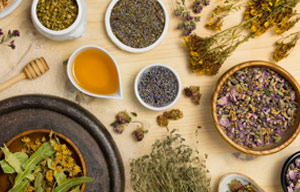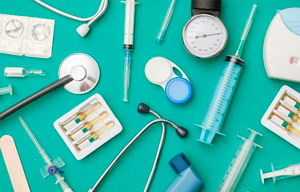Standar Obat Herbal Korea Selatan
- ISO(International Standardization Organization)
- IEC(International Electrotechnical Commission)
- ASTM(American Society of Testing Materials)
- EN(European Norm)
- DIN(Deusche Industrie Norm)
- NF(Normes Francaises)
Functional ingredients / products which risk assessment has been conducted by KFDA
When this type of product is imported, it goes to Lab test whether it conforms with stadards
Required for Preapproval
Functional ingredients / products which risk assessment has not been conducted by KFDA are required for pre-approval
☞ Please contect Health Functional Food Standard Division
Packed in bulk or in large volume of units for further processing / manufacture
Semi-products can be included which are mixed with minor ingredients such as fructose, starch, glucose or seasoning
Products
goods which consumer can have in retail and which have appearance of tablet, capsule, powder, liquid, granule, flake, paste, syrup, gel, jelly or bar
Every ingredients, Health claim(functionality), Daily dose/intake, caution(allergy, side effects etc.) are labelled on the package for consumer
Documents related to Genetically Modified Organisms
- Foods contained soybean, corn, cottonseed, rapeseed, sugar beet or it’s sprouts as main ingredients(up to the 5th largest ingredients in contents)
| Scope of GM Labelling | Scope of GM Labelling | Exempt from GM Labelling |
| Agricultural products | LMOs which KFDA approves to import | IP Handling or Export Certificate has been submitted to prove ※ unintentional adulteration : not more than 3% |
| Processed Foods | Processed foods which contained GMO as ingredients | o Isolated agricultural produce from GM which attached with IP Handling or Export Certificate ※ unintentional adulteration : not more than 3% o Including GM ingredients, but § contents of GM ingredient is less than the 5th largest ingredients § analysis certificate ca prove that any GM ingredients do not exist in final good ※ soysauce, oil, sugar, alcoholic beverages, etc |
- Scope : imported foods labelled "organic"
- A copy of organic certificate is required to submit which can be issued by organic certification bodies accredited by IFOAM or by exporting country
Transaction certificate or Ingredient list can be required to confirm from 2011, any product labelled "organic" will be required to be certified according to ‘Food Industry Promotion Act’ (for details of organic certification, please contact National Agriculture Products Quality Management Service).
Analysis Certificate / Organic Certificate
- KFDA commissioner approves overseas laboratories after on-site inspection
- Certificate of analysis issued by overseas laboratories can be substituted for inspection at the border
☞ For Information of Approved Overseas Laboratories
☞ ENGLISH (an enhanced button at the top of the page)
※ Please check an operating country and scope of analysis for each laboratory
- Scope : imported foods labelled "organic"
- A copy of organic certificate is required to submit which can be issued by organic certification bodies accredited by IFOAM or by exporting country
- Transaction certificate or Ingredient list can be required to confirm
- Processed foods, food additives : importer·country of origin· manufacturer·product name·processing flow and every ingredients are identical
- Agricultural products : importer·country of origin·manufacturer· category of produce·exporter and packer are identical
- Utensils, containers & packages : importer·country of origin· manufacturer·food-contact material and color are identical
- Document Review (2 days)
- Once the product conforms with standard as a result of laboratory test, the next consignment of the same product goes to document review
- Ingredients for processing
- Flavour(food grade) and utensils·containers made with woods or stones
- Sensory Test (3 days)
- Once agricultural produce conforms with standard as a result of lab analysis, the next consignment of the same produce goes to sensory test
- Any product which is required for checking characteristics(flavor, taste, color), storage, labelling and/or package
- Laboratory Test (10 days, 14 days for canned or retort foods)
- The first import of a product
- The product with rejection record or risk information from various sources
- In case that standards or specification has been changed<>/
- Random Sampling Test (5 days)
- Products are chosen by KFDA system according to annual random sampling plan
- Agricultural Products : fresh, chilled, dehydrated, frozen or minimally processed products
- Processed Foods
- Food Additives
- Utensils, Containers & Packages : in contact with foods or food additives
- Health Functional Foods
- For sale : registered importer can import foods for sale
- For processing : registered food manufacturer can import foods for processing
- It is required to state address of place where the product is actually manufactured or processed
- It is not admitted to state address of headquarter or distribution office
- Foods : Name of every ingredients or components has to be stated.
- Quantity of food additives has to be stated when the food additives have limitation in use in Korea Food Additive Code.
- Utensils, Containers & Packages : Every food-contact materials has to be stated
- Processing flow and solvent / enzyme used have to be stated
For pharmaceutical product
The Republic of Korea has legally adopted two medicare systems, Western medicine and oriental medicine.Traditional medicine in Korea is based on both traditional Chinese medicine and Korean folk medicine. The empirical folk medicine has passed on from generation to generation and is not prescribed by Korean oriental physicians.
Legal Status
The Composite Pharmacy Law governs all activities concerning pharmacies, pharmaceutical industries, and suppliers of medicines including herbal raw materials. The two official drug compendia are the fifth edition of the Korean Pharmacopoeia and the Korean Natural Drug Standards [Chang, 1989]. In addition, there is a specific law for pharmaceutical.
Herbal drugs and preparations thereof have to be standardized and controlled according to the requirementsof the Korean Pharmacopoeia, the National Institute of Health and the Ministry of Public Health and Social Affairs. The information required for these products includes taxonomic status, parts of plants, morphology, qualitative examination, purity, content of essential oil or extract, and grade of quality.
- General standard
- Pharmaceutical ingredients: not less than 99.0%
- Single preparations: 95.0-105.0% (for externally applied preparations, 90.0-110.0%)
- Multiple preparation : 90.0-110.0%
- Antibiotic preparations: 90.0-120.0%
- Vitamins
- Vitamin multiple preparation (except injections) and vitamins and metal elements added in the vitamin multiple preparation:90.0-150.0%
- Vitamin single preparations and vitamin injections:90.0-130.0%
- Vitamin derivatives preparations: 90.0-130.0%
- Volatile substances of the pharmaceutical: 90.0-130.0% (e.g., menthol, thymol, camphor, ethanol, etc.)
- Single and multi nucleic acids: 90.0-130.0%
- Enzyme preparations
- Pharmaceutical ingredients: not less than 100.0%
- igestive enzyme preparations: not less than 90.0%
- Anti-inflammatory enzyme preparations: 90.0-130.0%
- Single or multi amino acids and their derivatives preparations: 90.0-130.0%
- Lactic acid bacteria preparations and other probiotics: not less than 90.0%
- Disinfectants: 90.0-110.0%
- Protein organ extracts (hydrolysis) preparations ∙
- Pharmaceutical ingredients: not less than 100.0%
- rug products: not less than 90.0%
- If it is impossible or unnecessary to determine the content of active pharmaceutical ingredients and so, the specification of content is not established, the efficacy test, performance test, or pharmaceutical test may be conducted instead (e.g., medicinal carbon: absorption capacity test).
- pH: ± 1.0 as for actual statistical values
- Specific gravity: ± 0.05 as for actual statistical values
- Residue on evaporation: Upper limit shall be established on the basis of actual statistical values.
- Alcohol number: This test shall be established for oral preparations containing not less than 4% of ethanol and the limit shall be not less than 90.0% of the labeled value.
- Preservatives test: This test shall be established for drug products containing preservatives. In this case, the preservative shall be identified and the content shall be not more than the labeled value. As for all preparations except oral solutions, the amount of the content shall be 80.0-120.0% of the labeled value. If necessary, other appropriate ranges may be established separately.
- Uniformity of dosage units: Korean Pharmacopoeia and Specification & Test Methods for Mass (Volume) Variation of Pharmaceuticals, etc. (KFDA's Notification) shall be applied.
- Microbial limit test: Specification & Test Methods for Microbial Limit Test of Pharmaceuticals, etc. (KFDA's Notification) shall be applied.
- Adhesive strength: When tested according to the Adhesive strength method described in the adhesive plaster of the Korean Pharmacopoeia, plasters and pressure sensitive adhesives, and cataplasmas shall have the adhesive strength of not less than 42 g per 12 mm wide.
- Texture (length and width): When tested according to the Texture described in the adhesive plaster of the Korean Pharmacopoeia, the length and width shall be not less than 98.0% of the labeled values.
Kewajiban Bea Cukai dan Pajak untuk barang impor
Rata-rata kewajiban bea cukai (tidak termasuk produk pertanian) adalah 8%. Tarif bea cukai ini terkategori paling rendah dari negara-negara lainnya. Namun, untuk produk tekstil dan pakaian jadi, tarif yang berlaku lebih tinggi dari rata-rata.Salah satu alasannya adalah untuk melindungi produk tekstil dan pakaian jadi dalam negeri.Namun, akhir-akhir ini, Korea Selatan menjalin kerjasama dalam bentuk Free Trade Agreement dengan berbagai negara, salah satunya dengan ASEAN.Beberapa produk terkait tekstil dan pakaian jadi tidak dikenakan tarif impor. Adapun tarif bea cukai Korea dibandingkan dengan tarif bea cukai seluruh dunia dapat dilihat di tautan berikut. (https://www.wto.org/english/res_e/booksp_e/tariff_profiles14_e.pdf)











